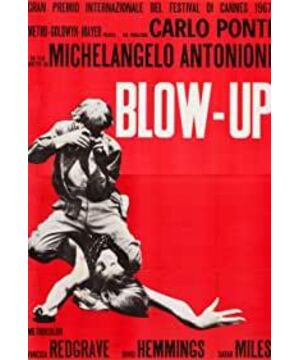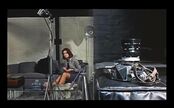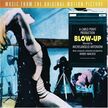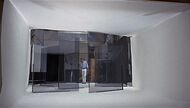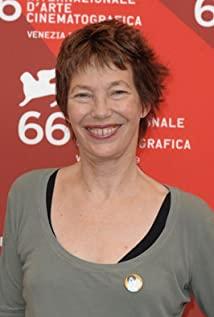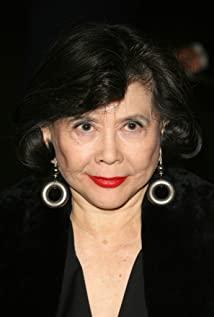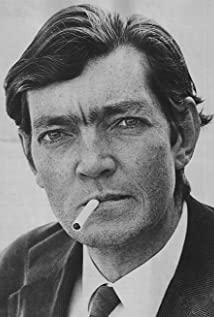In the previous reflections on Antonioni's films, I have quoted Benjamin's argument in "Paris, the capital of the 19th century", because the theme of all Antonioni's films seems to be the revealing of modernity phantom. I especially like Monica Vitti's performance, because her neurotic movements (involuntary twitching of fingers, sudden interest in something, a sense of loss after laughing) are perfect representations of the sleepwalking mental state of city dwellers.
And in Zoom, the photographer Thomas fits Benjamin's definition of the loitering, an important theme for Baudelaire. In 19th century Paris, from the July Dynasty to the Second Republic, with the rise of daily columns and panoramic literature, literati became more and more dependent on public spaces such as markets and boulevards. In order to collect materials and find buyers, they became people in the crowd.
“The crowd is not only the newest hideout for the outlaws, but the newest narcotic for the outcasts of society. The loitering is the one who is left out of the crowd. In this he is in the same situation as the commodity. … It is he who indulges in happiness like drugs can compensate for many of his humiliations. The kind of intoxication the loiterer falls into as the merchandise revels in the tidal wave of customers around him."
The wanderer's special talent is that he can hide in the crowd and see the crowd around him as a type of spectacle. At the beginning of the film, Thomas, dressed as a poor man, lurks in the shelter to take a lot of first-hand photos. Later in his conversation with Ron we learned that he was only going to use three or four pictures, which wouldn't even fill a photo book from start to finish. He wanted the work to be "both violent and peaceful". This is the type of magic that haunts modern man. As a photographer, Thomas not only works in the studio, he also takes to the streets at any time, turning anything into a subject. The latter state of work brings him closer to what Benjamin calls the loafer, who wants both to provide a panoramic (albeit so arbitrary) mapping of society, while at the same time being magnified by the desire to live in a particular class of life. attracted.
Thomas is not just a wanderer who is intoxicated between commodities, he is also a consumer in the modern sense. Any desire should and is destined to be satisfied instantly. Desires that cannot be satisfied in an instant will not be delayed, but will be disappeared without a trace. Benjamin described this fetishism this way: "If the soul of the commodity Marx occasionally jokes about really exists, then it may be the most empathetic in the soul world, since it has to see everyone as a potential buyer. It's the essence of the ecstasy of the wanderer when he plunges into the crowd."
We could even say that the essence of the photographer's work is empathy, and Antonioni did not shy away from the political function of the camera as an extension of the gaze (as a prosthesis of the eye), i.e. the curious gaze is always political and hierarchical in order. Already in some of the images in Eclipse, we have been exposed to how this desire for magnification turns reality into a meta-movie, and Amplification exposes the violence of the camera medium even more clearly.
We would have thought that this amplified longing would lead us to reality, but Antonioni hit the audience with his usual iconoclastic plot: there is no reality, only a simulacrum of reality. Under the layer-by-layer magnification, the specific image has become a blurred pixel, just like Seurat's pointillism, those small dots that are constantly scattered and re-aggregated represent a kind of image that has appeared since the Industrial Revolution. A new form of attention, the paranoid gaze can give meaning to one moment with its powerful attention and curiosity, but slide to the edge of vision the next.
This separation of image and meaning is already present in the episodes that take place in the studio. Here, a painting of automatism begins to show its meaning after it has been completed, just as God performs miracles before the artist. It is a somewhat unconscious result of the painter, but the still image itself is a disruption of stable meaning. Interestingly, the invention of photography once announced the crisis of the representational function of painting, but the Impressionist masters took advantage of this opportunity and opened up modern abstract painting. Antonioni also presented this crisis very subtly. When the painter introduced his new painting, Thomas asked if the painting would be sold; after getting a negative answer, he still did not give up, "Then can you give it to me?" ?
Nowadays, modern painting seems to go further than photography. It completely gets rid of the limitation of reproducing objective objects, and is just a presentation of visual power. But on the other hand, painting still cannot get rid of the relationship of consumption, and in the eyes of wanderers, it always surrounds the halo of commodities.
The violence of photography is also reflected in the fact that images cannot be restored to reality, it is always just the reduction, editing and selection of real time. The murder that happened in the photo is the same as the scream that happened in the novel in "Red Desert". It's just a scale and half a claw left by reality. We can't restore the truth in reverse by relying on these traces alone. In doing so, Antonioni brings out the subtlety of the documentary nature of the camera, the murder has already happened when the picture is taken, but we only discover the meaning of the image in hindsight. Real-time recording is separated from epigenetic meaning.
In this sense, photography may never be able to capture a minute and a second of reality from the torrent of time. What exists there is always a cropped and enlarged "reality". Instead, the moving images, with their automated patterns of movement, create something surreal in our consciousness—the tennis ball that doesn't exist.
View more about Blow-Up reviews


